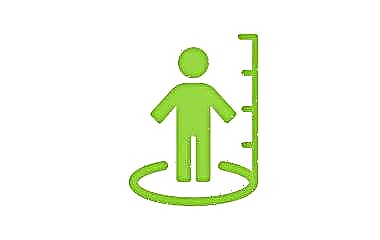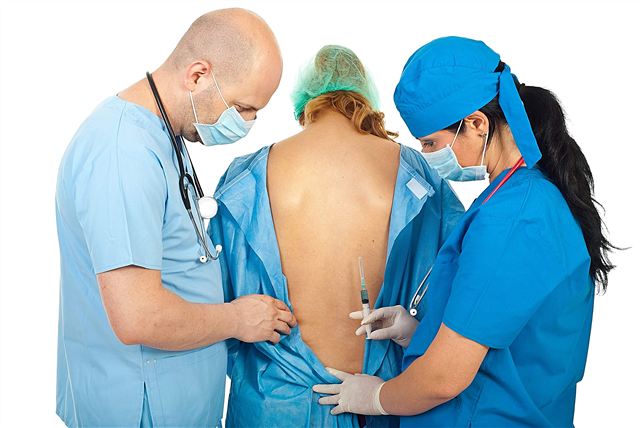When the first period in the baby's life ends, and he passes from a newborn to a group of babies, a new difficult stage begins. Parents are looking forward to the appearance of teeth with impatience and fear, as they understand what difficulties await them.
By the age of five months, a normally developed baby is ready for the first teeth.
It is believed that the first tooth pops out at five months. There is also an earlier eruption - in two to three months. Late crawling of teeth can be considered the norm if the child does not have rickets, calcium and phosphorus deficiency in bone tissues.
Ideally, up to three years old, the baby should form the necessary set of milk jugs.
Although babies develop according to their individual characteristics, it is useful for parents to know how teeth appear in babies and the procedure for cutting by medical standards. This will provide an opportunity to prepare for their appearance.
Why the numbering of inconsistent teeth
To make it easier for adults to track the development of milk jugs, pediatricians are advised to study dental numbering. Numbering is a common pattern of teeth in a child, indicating their order. It must be borne in mind that due to the presence of inconsistent teeth, children's numbering differs from that of an adult, has its own terms.
It is important for parents to study the children's scheme in order to know in what period, in what sequence and in what place in the oral cavity each tooth should be located according to its number.
According to dentists, numbering is needed not only to fix the location and condition of the teeth of a small patient, but also to approximately calculate the time for their crawling out. This will make it possible to timely identify developmental pathology and avoid problems in the future.
In medical practice, several types of schemes are used, which consist of an alphabetic or alphanumeric designation. For parents, digital encoding is fine.
Dentists have developed a special dental formula for babies N = n-4, with which it is possible to determine the presence of the required number of teeth at a given age:
- n - age,
- N - the number of milkmen appeared.
Any parent can calculate the order of teeth in babies according to this formula and notice deviations from the standards in time.
The scheme of eruption of milk teeth in children
Signs that teeth will come out soon appear in about two weeks. The baby develops swelling of the gums, increased salivation, the desire to gnaw and bite everything. The temperature often rises, the baby's sleep becomes restless, and loose stools become more frequent. In order to mitigate the difficult period for the baby as much as possible, it is advisable for loved ones to prepare for it in advance: consult a pediatrician, buy pain relief drugs (gels, teethers, medications), warn all household members about the difficulties of raising a child during the period of the first teeth.
Important! For a mother, information about the order and sequence of teething in babies, their name will be valuable. After all, she will have to face the problems of this process: make sure that it proceeds normally, alleviate the child's suffering, determine when to switch to solid food, and visit the pediatrician more often.

It is important for parents to study the teething scheme and numbering of teeth in an infant.
The pattern of teething in infants is dictated by nature itself, since the development of the chewing apparatus is a natural process. Parents are interested in at what age period milkmen begin to grow, and what is their sequence. Even doctors do not give a definite answer, claiming that each child develops individually. You can only track an approximate schedule, since a lot depends on external and internal reasons. The main thing is to stay calm, not to worry the child and not to miss any deviations from the schedule.
Note. Experts note important information for mothers: the timing of teeth crawling in boys and girls is different, since there are differences in the physical development of children of different sexes. Girls can be about a month ahead of their peers in terms of the appearance of milkmen.
Porder of pecking milk teeth
Incisors
The first to appear are the lower and upper incisors in the center of the jaws (numbered 1 and 2). Then, about a month later, the lateral incisors above and below, numbered 3 and 4, begin to be cut. The incisors have an important purpose, they serve to bite off solid food. In total, a person has eight of them: four on the upper and lower jaws. For a baby, pecking the incisors is a painful procedure, because these are his first teeth, which have to climb through the dense membrane of the gums. Because of this, the teething process is accompanied by pain, moods and anxiety. It is difficult for adults during this period to take care of the baby, since they must be able to provide all possible help to the baby, and show maximum patience.
Molars
Molars are chewing teeth, with the help of which food is crushed, grinded and chewed. Despite the fact that they come out last, they correspond to serial numbers 5, 6 and 8. Compared with the incisors, their appearance occurs relatively easily, accompanied most often by a runny nose.
Molars are divided into premolars, small molars and molars proper, large molars. The child has eight molars: four on each jaw and two on each side.
Note. When a change of teeth occurs, it often happens that the permanent ones begin to erupt between the milk ones that have not yet fallen out. As a result, the permanent can become uneven, forming an irregular bite. It is necessary to notice this negative moment in time and remove the milk tooth.

Molars complete the teething process in babies
Fangs
According to the scheme, after the incisors, the canines "peck", which are located on the sides of the incisors and complete the central dental group. Fangs are essential for processing solid food. A human has only four canines: two in the upper and two in the lower jaws. Although they appear before the teeth of the molars, their location number is 7.
Important! "Pecking" teeth is a difficult period for an infant, when many life cycles go astray. On the example of the appearance of canines, one can understand the complexity of the teething process. Fangs are cut at the location of the optic nerves, so about ten percent of children may experience pain in the eye socket and increased eye strain.
For parents' information, children's dentists have compiled an approximate schedule of milk jugs crawling out in a child by months and the names of the teeth:
- central incisors in the lower, then in the upper jaw - at 6-8 months;
- lateral incisors of both jaws - at 8-12 months;
- canines - at 1.5-2 years;
- first premolars or chewing teeth - at 1-1.5 years;
- second or root molars - at 2-2.5 years.
The main indicator of the norm is the presence of eight milkmen, which should "hatch" during the first year of a baby's life. All others will definitely grow in the next one and a half to two years.
Important! Along with milk teeth, molars can appear, which should not worry the mother, since this is also the norm. By the end of an early age, in the absence of pathologies, the child should have 20 milk teeth.
Why eruption can be delayed
Most infants, although painfully tolerate the symptoms of eruption of milk jugs, are on schedule and without deviations. Sometimes it happens that the period for the appearance of the first teeth is significantly delayed, which makes parents worry. You should know the main reasons why sometimes milkmen are in no hurry to go outside.
The reasons why babies' teeth deviate from the schedule and the order of teething is disrupted are classified by pediatric dentists in different ways. On the one hand, they call impaction the cause, when there are mechanical obstacles to the masticatory apparatus, and aneruption is the primary delay. On the other hand, local and systemic factors are distinguished.
Local, rather rare, exit factors include:
- polyodontics - an abnormal number of teeth, an additional dental kit prevents milk jugs from growing;
- neoplasms in the mouth;
- injury or change in the gum mucosa;
- bruises or compression of the mouth;
- congenital anomalies in the form of a cleft lip.
Systemic causes can be:
- genetic abnormalities;
- disturbances in the work of the endocrine system;
- calcium deficiency;
- congenital rickets;
- serious infectious diseases: anemia, ichthyosis, kidney dysfunction, measles.
The key to good formation of tooth buds and their timely eruption is the normal course of pregnancy
Separately, such an important reason for the painful exit should be named, when the mother herself, with her improper behavior during pregnancy, can disrupt the timely appearance and growth of the baby's teeth.
The delay in eruption can be influenced by the malnutrition of a pregnant woman, refusal to take the prescribed mineral and vitamin complex. Often unjustified diets of the mother negatively affect the development of the rudiments of not only milk, but also permanent teeth in the fetus.
Diseases, complications during pregnancy, taking medications affect not only the timing of eruption, but also the formation of subsequent dental lesions.
There is scientific evidence that the mother's bad habits during pregnancy increase the risk of developing such a pathology when the rudiments of the teeth are not formed, therefore, the teething pattern is disrupted.
Important! Doctors warn that the first condition in pregnancy is a woman's desire for its normal course without risks and complications. Then you can guarantee that there are no problems with the timing of the eruption and exit of children's teeth.
When to see a dentist
- The problem is the delay in the eruption of teeth and on this basis, the desire to urgently run to the dentist disappears by itself, provided that all the teeth in the child have erupted, are in their place, and chewing functions are well formed. Experts warn that the main danger during teething is that the bite can be disturbed, the teeth can grow into the gum, take out of place. Then this is a serious cause for concern, forcing parents to contact a pediatric dentist. The attending physician will provide the necessary treatment and provide further prevention.
- Polyodontia or hyperdontia is one of the reasons for seeking medical attention early. An anomaly in the number of teeth does not allow normal milk jugs to develop correctly, leading to deformation of the dentition. Timely removal of the superset will save the child from lisping, speech distortion when he starts to speak.
- Late eruption should not be confused with severe edentulous disease, when even the rudiments of teeth are missing. Unfortunately, the reasons for this deviation are not fully understood, it is assumed that they are associated with abnormal intrauterine development.
- A serious reason for going to the dentist can be complications during teething. You can not hesitate to visit a doctor if there are hematomas, bleeding from the gums, fever up to 38 degrees and above, the formation of purulent ulcers; frequent bouts of vomiting, diarrhea, pronounced cough or runny nose with greenish mucus secretions appear.
Complications of teething of milk teeth require an urgent visit to the dentist
Tips for parents
- Children's doctors advise to be attentive to the baby's milk teeth, the order and sequence of their eruption. It is a mistake to think that the natural process occurs involuntarily, without the intervention of adults. On the contrary, you should follow all the rules for caring for a child, no less careful than for newborns.
- The oral cavity needs cleanliness and hygienic care. It is necessary to wipe the baby's teeth with a silicone brush every day. Then in a year the baby will learn to do it on his own. Be sure to teach your child to rinse his mouth after eating solid food.
- Even if everything goes well according to the teething pattern, it is necessary to visit the dentist for prevention when the child turns one year old.
- Adults can relieve teething pain in a child by purchasing silicone teethers.
- According to the pediatrician's recommendations, the child's painful condition can be helped by medical means:
- Homeopathic medicine Dantinorm baby in solution. Among other things, it will help with indigestion. Such a drug costs three hundred rubles *, purchased at a pharmacy;
- Kamistad gel is an anesthetic, anti-inflammatory and antiseptic agent. It contains chamomile extract, which soothes soreness. Pharmacy purchase, the cost of the drug is about 150 rubles *;
- Gel or solution Dentinox, which works well for pain syndrome with sore gums. Such a drug costs about 180 rubles * in a pharmacy.
- Relatives can use the advice of traditional medicine to alleviate the condition of the crumbs:
- a cold spoon helps well, which can be periodically put in the baby's mouth;
- gently massage the gums with a piece of sterile cotton wool dipped in peroxide;
- relieves irritation and soothes pain honey on a cotton swab;
- with the help of a soda solution, pain symptoms can be relieved, the gums are treated with a piece of bandage soaked in the solution and a thin layer wrapped around the mother's finger.

Teethers relieve pain in babies
During the period of tooth growth, it is hard not only for the baby, but also for all his loved ones. It is impossible to bypass such difficult moments in the physical development of the child, but you can make the life of the whole family with maximum benefit during this period and get a pleasant bonus in the form of the full physical development of the baby.
Parents are able to show maximum attention and love to the baby, who is still in close emotional and physical connection with the mother. Children are very sensitive to the mood of loved ones.
Remember! When the mother is calm, then the baby is calm.
* Prices are valid as of May 2019.



